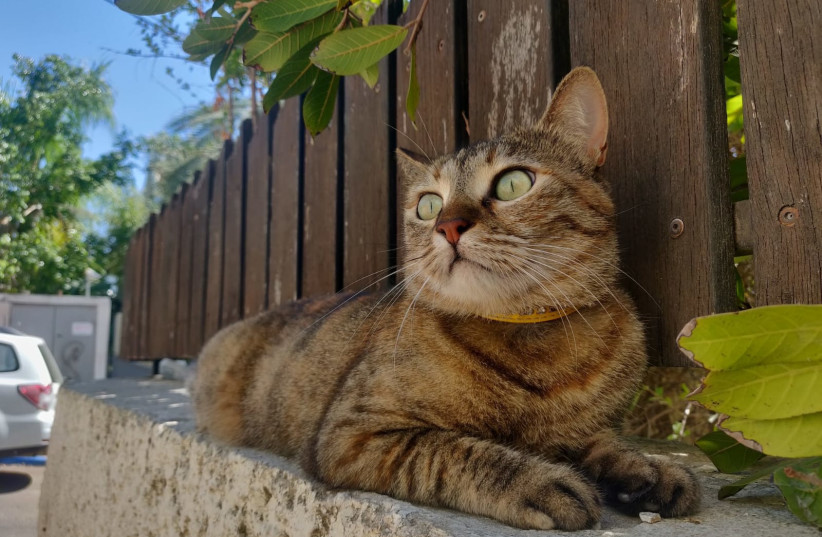Many pet cats frequently leave the home and travel outdoors, but while many owners may have no idea exactly where their furry friends have gone, a recent study suggests that at the very least, they likely haven't gone far.
The study, published in the peer-reviewed academic journal Scientific Reports, took a look at pet cats with the ability to access the outdoors, known colloquially as "outdoor cats," living in a residential area in southern Norway.
Can't keep a cat in a cage
Cats are one of the most popular pets worldwide, and the stray cat population throughout the world is also very high. In fact, according to a 2020 study, there were an estimated 600 million pet cats worldwide over a decade ago. With numbers this high, cats are essentially one of the most abundant species of carnivores either domesticated or in the wild.
In Israel alone, the stray cat population is thought to number around two million, and that isn't even taking into account the number of pet cats.

But as any cat owner will testify, cats, characterized by their nearly untamable independent streak, rarely are satisfied with staying indoors all day.
Rather, they will constantly be looking out windows, often meowing at the door and generally trying to escape the confines of the home whenever the mood strikes - though they usually tend to try to return soon after.
This persistence and independent streak, as well as their tendency to almost inevitably return home, has led many cat owners to give in to the demands of their feline friends and allow them access to the outdoors as needed. The exact number of outdoor cats in relation to pet cats overall is unclear, though a 2013 study of cats in the US suggests it could be between 50% to 80% of pet cats.
This isn't necessarily something they need to do, as cats can survive just fine on food from their humans. However, almost all cats are known to enjoy hunting for prey, in addition to often just enjoying being outside.
But while having outdoor cats is rather widespread among cat owners, many still are anxious as to where their cats go during their time away.
So, for the first time ever, scientists attempted to essentially map out the space used by cats - the "catscape."
The catscape
The sheer number of cats in any given urban area is likely very high, though this does vary from place to place.
Prior studies have shown that there tends to often be a ratio of several hundred individual cats per square kilometer in an urban area. But despite this, there hasn't ever been an effort to truly track the majority of cats in an area.
That's where the study comes in.

Over the course of a month, the scientists GPS-tagged and tracked 92 different pet outdoor cats, the vast majority of whom had unlimited access to food from their humans, in a 1.1 square kilometer area in Norway with the goal of understanding how the cat population is distributed.
And for most of the time, cats that go outside of their homes tend to be just around the corner — literally.
On average, it turned out that the cats spent a vast majority (79%) of their time outdoors while being just 50 meters or less away from home, with the maximum average distance being around 352 meters. There were exceptions, some of whom event traveled several kilometers away, but these were far outside the norm.
There are some factors that play into these variations, however. This includes a cat's individual personality and whether the cat has been neutered - with neutered cats far less likely to roam far.
Is this a paw-sitive development?
The implications for understanding how cats are distributed go far beyond just cat owners wondering what their pets do in their free time.
Rather, it can have major implications for understanding the state of wildlife in a given area.
As mentioned earlier, cats are one of the most abundant species of carnivores on the planet and are incredibly effective hunters. As such, the sheer number of cats in an area can have a major impact on the local ecosystem due to being an apex predator among the wildlife.
Now, cats acting as hunters isn't a bad thing, per se. After all, it is their tendency to prey on rodents like rats that have helped keep humanity thriving for millennia. This is no exaggeration, with scholars pointing to cats being essential to humanity's agricultural success, as they protected human grain storage from rodents some 10,000 years ago. In fact, their use to farmers was of such importance that they began to spread as farming did too, and in one case a cat was even found buried in a human grave in Cyprus dating back some 9,500 years ago.
But this predatory tendency is not limited to just protecting human grain storage, and in fact has an absolutely astounding ecological impact.
This, too, is not an exaggeration. The number of wildlife animals such as birds or small rodents and more killed by outdoor cats cannot be adequately quantified, but scientists are certain that the number is incredibly high. In fact, some scientists estimate that billions of birds and mammals alone are killed every year by just cats.
It is for this reason, along with fears of disease and getting hurt, that some experts urge cat owners to keep their cats indoors.
Consequently, however, understanding how many cats are in an area and how they distribute themselves in relation to their homes can help understand the exact scale of the possible devastation these domesticated predators wreck on local wildlife - and maybe even find ways of mitigating the ecological impact.
But more work will have to be done to understand just what man's often aloof and indifferent-seeming best friend does to the greater ecosystem and how any further damage can be lessened.

Interest is high in purrsuing answers
And at the very least, it seems there is certainly interest in continuing this line of study further.
Indeed, as the study was going on, people throughout Norway heard the rumors and wanted to join in.
"People are obviously very curious about what their cat does when it is out and about. Interest has been really high," project manager and professor Torbjørn Haugaasen of the Norwegian University of Life Sciences (NMBU) said in a statement.
And so, the quest to further understand the mysteries of cats continues.
